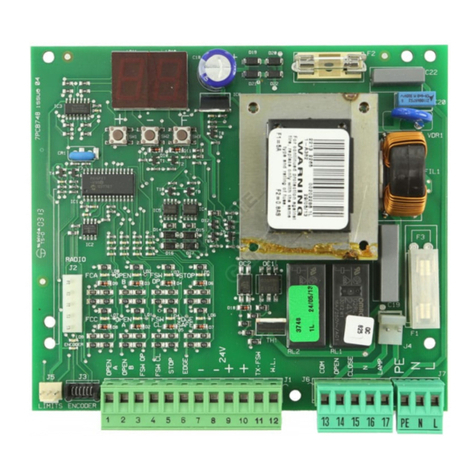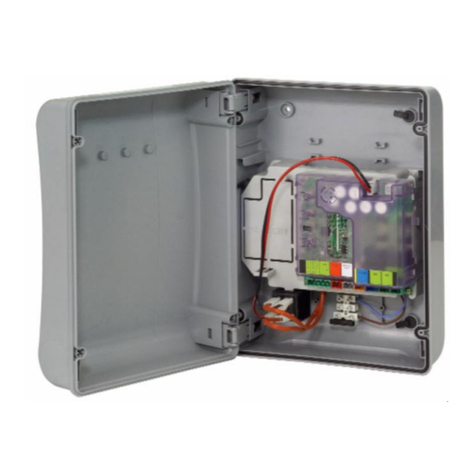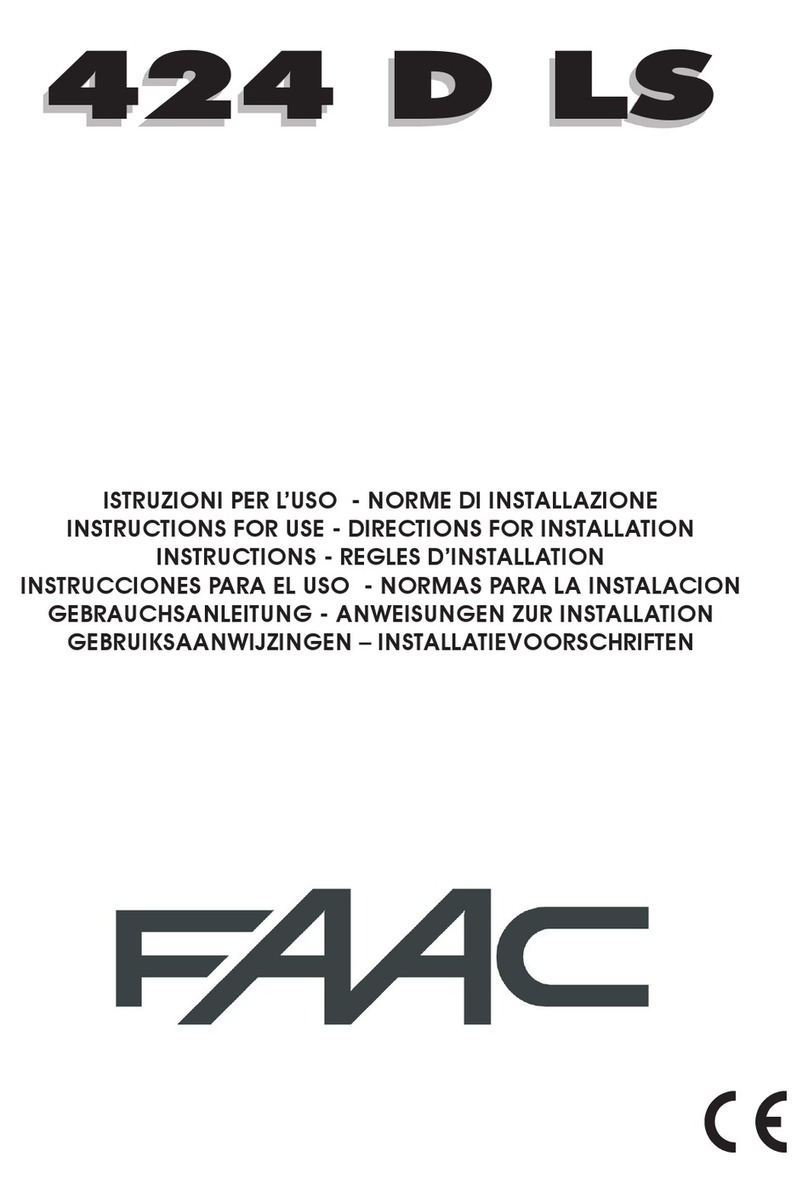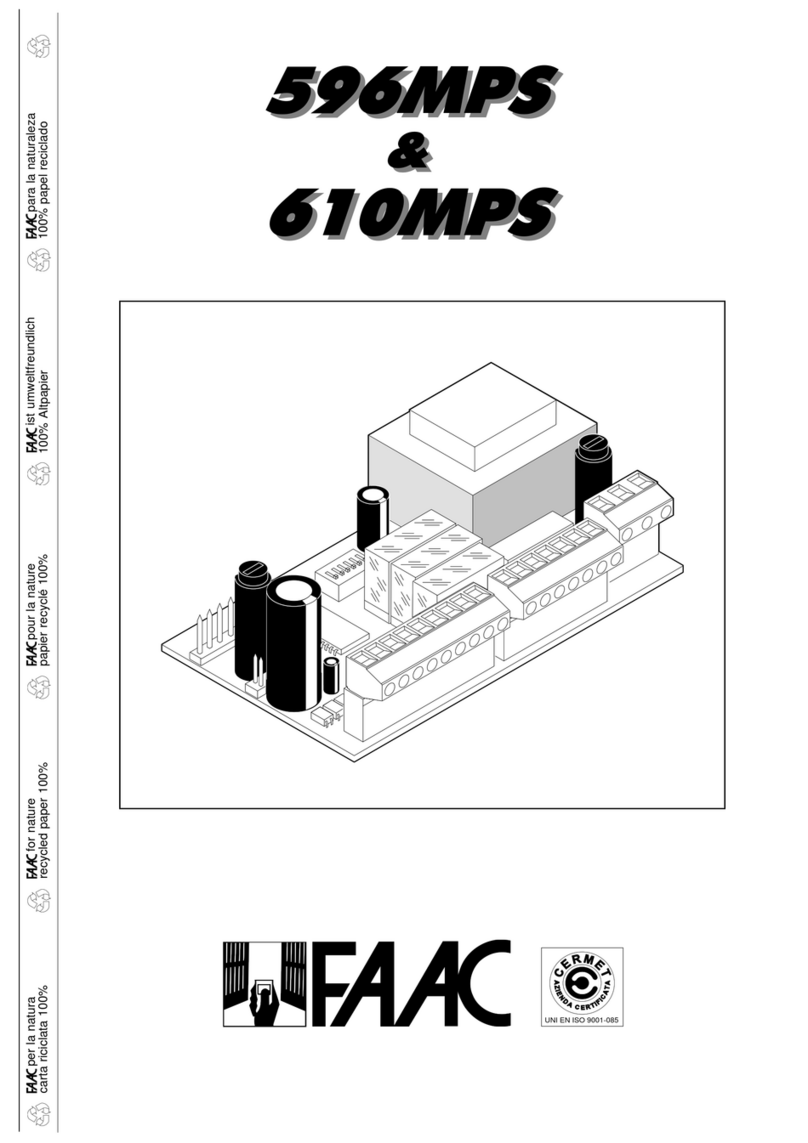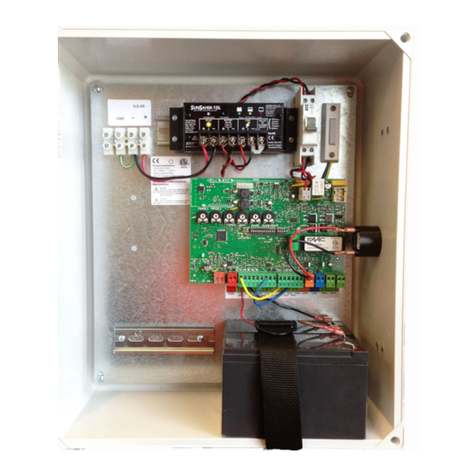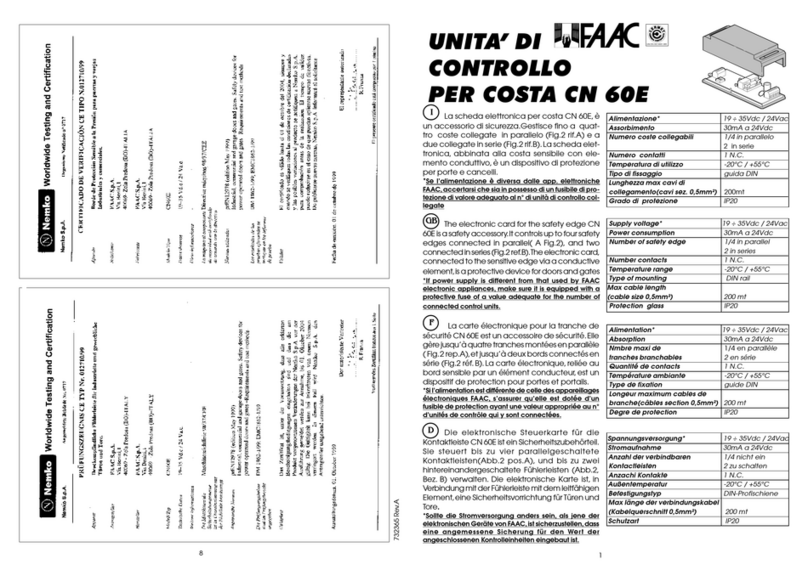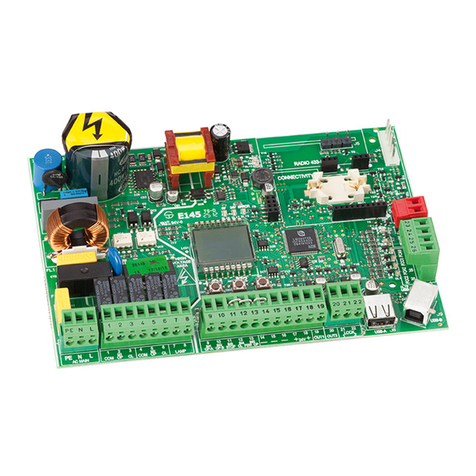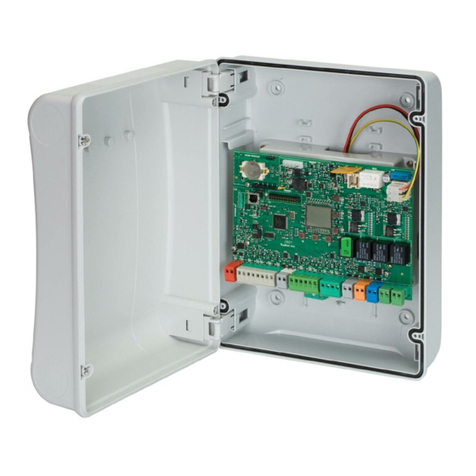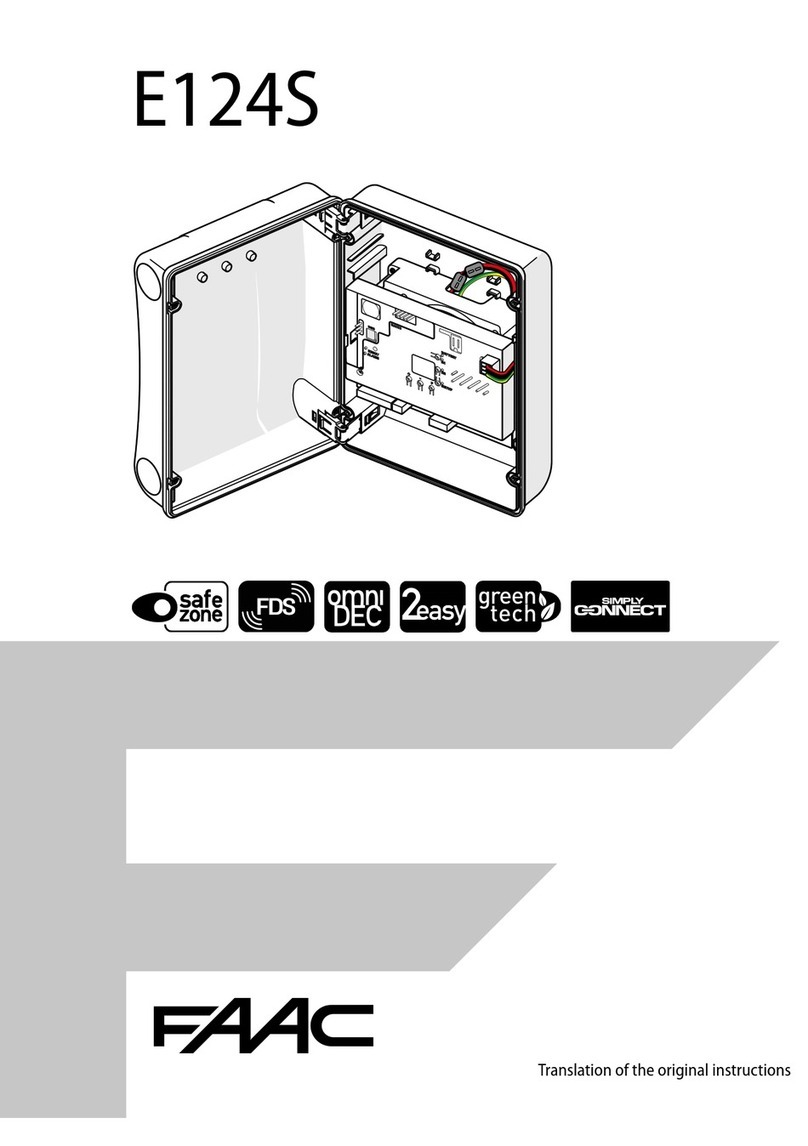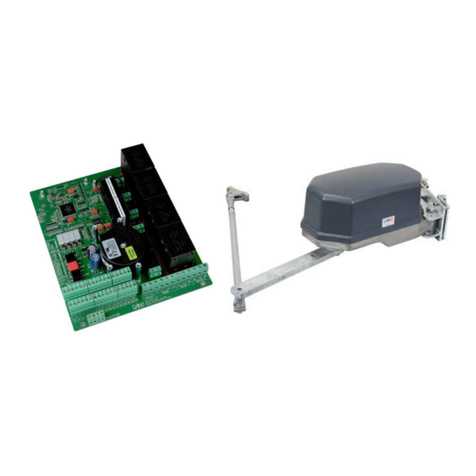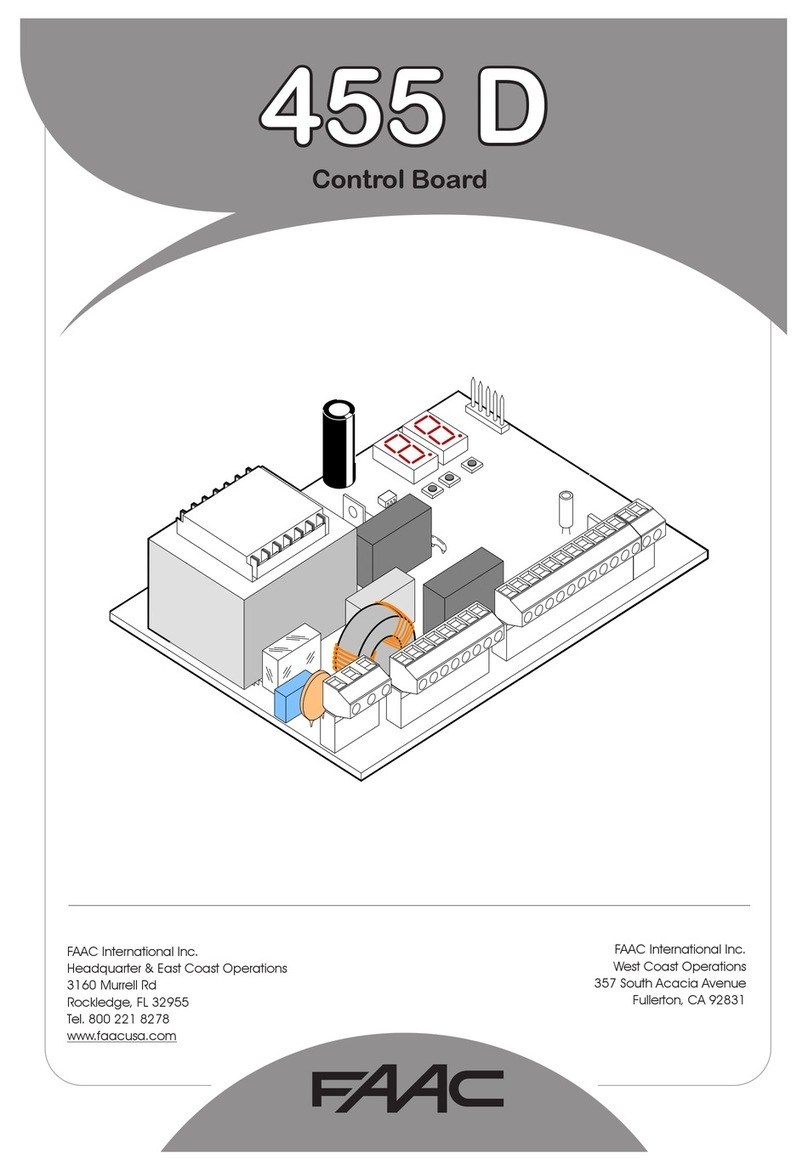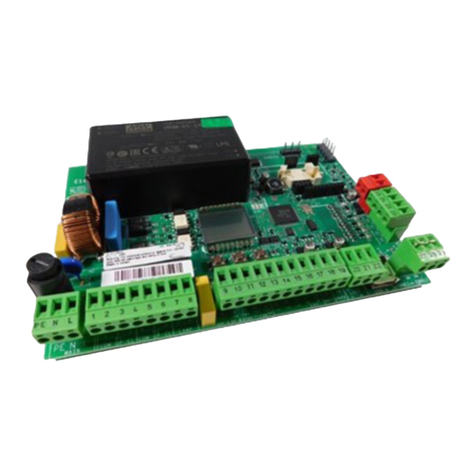
950N 1 732773 - Rev. B
q
q
OK
ENGLISH
The KP-CONTROLLER is used to select the operating
modes, adjust and program the Series 950 automatic doors.
It is divided into two parts: a xed part for selecting the
operating mode using buttons and corresponding LEDs
(Fig. 2 ref. a), and a removable part with LCD and selection
keys for accessing complete programming (Fig.2 ref. c).
The KP-CONTROLLER display can be used as a temporary
programming unit by setting ON the parameter “Maintain
settings” in the ADVANCED MENU: once all programming
and adjustments have been made, the KP-CONTROLLER
can be removed completely as all the settings are stored
on the 950 MPS board.
If the KP-CONTROLLER is installed without a display, a
cover is installed in its place (Fig. 2 ref. b).
1 DESCRIPTION
Fig.1
The KP-CONTROLLER can be inhibited using a key com-
bination (see the special LOCK function) or a switch to
create an internal jumper (Fig. 2 ref. LOCK).
2 INSTALLATION
Refer to Fig. 2 for the installation exploded view. There are
two openings for running the connection cable.
3 CONNECTIONS
The KP-CONTROLLER must be connected to the 950 I/O
board using a 2 x 0.5 mm2 max 50 m cable (Fig. 2). If the
two LOCK terminals are connected to each other, as shown
in Fig. 2, all programmer keys are inhibited.
4 DIAGNOSTICS
The KP-CONTROLLER (even without display) features a
diagnostic function which, in case of fault, interrupts every
2 sec. normal visualisation of the operating mode and si-
gnals for 1 sec. the fault condition through a combination
of ashing LEDs. Refer to the table in gure 3 for the LED
combinations and consequently the type of fault. Should
more than one fault occur simultaneously, the code of the
rst one detected will be visualised.
Manufacturer: FAAC S.p.A.
Address: Via Calari, 10 - 40069 Zola Predosa BOLOGNA - ITALY
Declares that: The KP CONTROLLER device
complies with the essential safety requirements of the following EU Directive
2004/108/EC Electromagnetic Compatibility Directive
And also declares that it is prohibited to put into service the machinery until the machine in which it will be
integrated or of which it will become a component has been identied and declared as conforming to the
conditions of Directive 2006/42/EEC and subsequent amendments.
Bologna, 10-01-2013
The Managing Director
A. Marcellan
CE DECLARATION OF CONFORMITY
KP CONTROLLER






